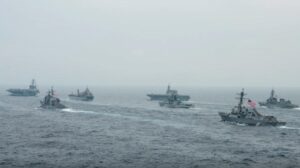
Maritime forces from the U.S., Australia, India and Japan started Phase II of the MALABAR 2021 maritime exercise in the Bay of Bengal on Oct. 11, the U.S. Navy said on Wednesday. The U.S. Navy is hosting this year’s exercise, which includes various kinds of tactical training, with specific interactions designed to enhance interoperability among U.S. forces and Royal Australian Navy, Indian Navy, and the Japan Maritime Self Defense Force (JMSDF). The first phase of MALABAR previously began in August…

 By
By 











